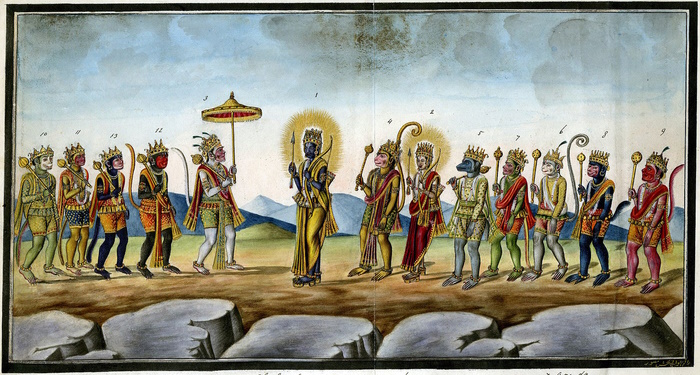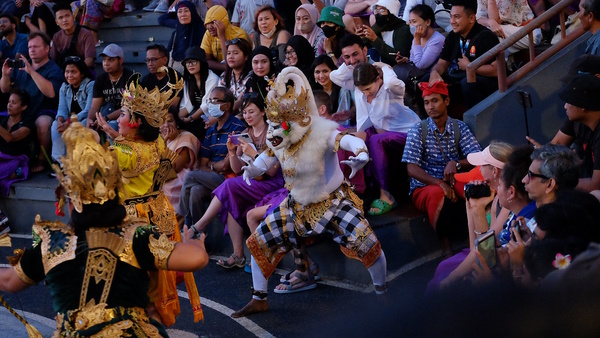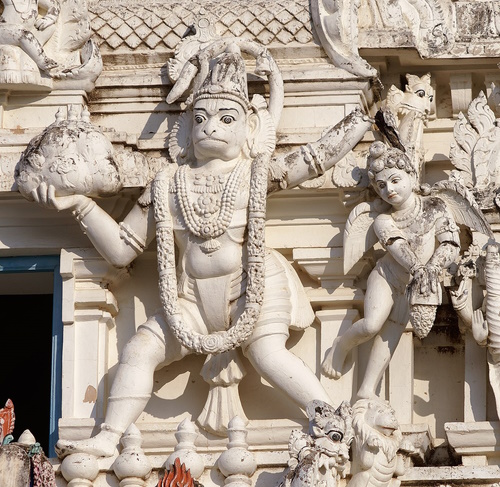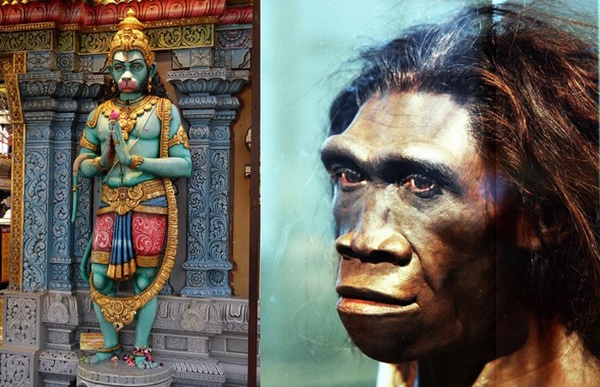The Ancient Race of Forest People
The Ancient Race of Forest People
by Robert Sepehr
April 19, 2023
The Ramayana is a Sanskrit epic from India in which the Vanara are a forest dwelling race or hominin species used as labor to build a bridge. They are general depicted as simian in appearance, but not specifically as monkeys.
Watch the full episode here: https://www.youtube.com/watch?v=hllWY5BBJOQ
Transcript prepared by Truth Comes to Light:
Even in the ancient texts of the Indian subcontinent, we have tales of the Vanara, a simian race that lives in the forest, featured in the Hindu epic, the Ramayana.
The word Vanara comes from varna, meaning forest, and nara, meaning man. And although the word vanara has come to mean monkey over the years, and the vanaras are depicted as monkeys in popular art, their exact identity is not clear.
The Ramayana presents them as human-like with reference to their speech and clothing. But also describes them as having monkey-like characteristics.
This Vanara race also appears in other ancient texts, including the Mahabharata. And while some Hindu scholars think of them as strictly mythical, a substantial number of them take the stories to reflect literal history, pointing to examples such as Rama’s Bridge, a 30-mile-long bridge described in the Ramayana as being built by the god Rama with the help of an army of ape men.
Geological evidence suggests that, what appears to be a man-made bridge, was once a former land connection between India and Sri Lanka, and that it was passable on foot until the 15th century, when storms deepened the channel.
A local Hindu temple claims that Rama’s bridge was entirely above the sea level until it broke in a cyclone in 1480.
While this bridge is controversial and there are plenty of skeptics discounting the stories as myth, I bring it up just to demonstrate that the idea of a different hominid species being hybridized and used as a worker or slave race is not exclusive to the Sumerians.
And there are scholars that not only point to archaeological evidence to support the ancient myths, many are now turning to genetics to back up the ancient literature.
Since modern DNA sequencing has unlocked the genomes of not only modern humans, but several archaic species such as Neanderthal, Denisovan and others that have yet to be identified in the fossil record — which are likely homo erectus specimen that can be found in the DNA of various races of modern living human populations today.
Dr Rangan Ramakrishnan, an Indian scholar, said that,
“If one reads the original Ramayana without the influence of succeeding vernacular versions, which emerged at least several centuries later, Vanaras like Hanuman, are referred to as distinct species altogether. Like other human species, they speak fluently and they inhabit a distinctive culture.
“Ramayana is perhaps the only literature to speak about a variety of human species, offering to fill an important gap in human ancestry and evolution through literary support.
“Interestingly, the protagonist Lord Rama corresponds to the sapiens, other ‘Vanaras’ loosely match Homo erectus, [while the villain Ravana and his ‘Rakshasas’ clan are mostly consistent with the description of Homo Neanderthals.]
“Are these striking similarities mere coincidence? Or shouldn’t we take it more seriously?”
See related images:



See related article:
Hindu Monkey God Hanuman May Have Been Homo Erectus – Scientist Says
Jan Bartek – AncientPages.com – Monkey God Hanuman is an important deity in Hindu mythology and one of the central characters of the Indian epic Ramayana. Hanuman is a patron god of martial arts and is sometimes considered a symbol of a symbol of nationalism and resistance to persecution.
Together with Ganesha, the elephant-headed God of knowledge, learning, Literature, and scribe of the Mahabharata, monkey God Hanuman is said to be one of the threshold gods, on the border of the material and spiritual realms.

Hanuman is a beloved Hindu deity, but is there any reason to think the monkey God was a real being or only a mythological creature?
An Indian scientist who examined the Hindu epic Ramayana has presented a rather unusual theory suggesting that Hanuman belonged to an extinct human species. If this assumption is correct, the perception of the monkey god Hanuman would change radically but where does the evidence come from and how is it assessed and used?
Dr. Rangan Ramakrishnan is a scholar of the Ramayana and literary historian who has recently published a book called The Ramayana of Valmiki. The Indian scholar explains that the story of the Ramayana could be of immense importance to our understanding of ancient history and paleontology.